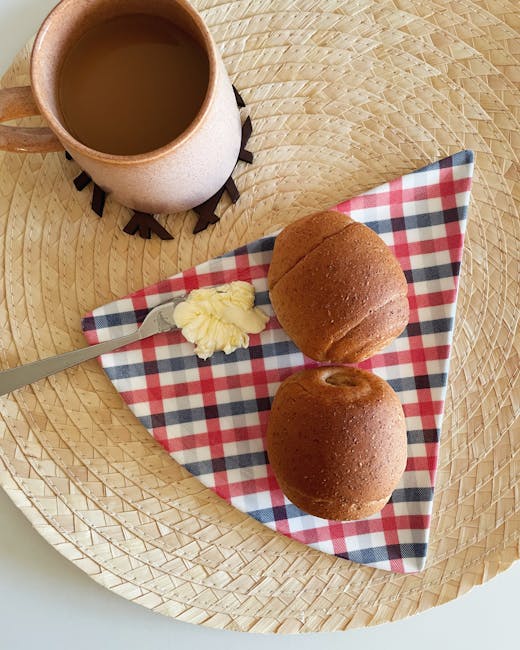How to Use Thermomix for Homemade Bread
In recent years, the Thermomix has become a beloved appliance in kitchens around the world. Known for its versatility and efficiency, the Thermomix can be a game-changer in the realm of homemade cooking. Among its many capabilities, making bread is one of the most rewarding. If you’re looking to elevate your bread-making game using this innovative machine, you’ve come to the right place. This blog post will guide you through the process of using a Thermomix to make delicious homemade bread, offering tips and insights to ensure your baking success.
Why Choose Thermomix for Bread Making?
Before diving into the “how,” let’s explore the “why.” Why should you use a Thermomix for making bread?
Efficiency and Convenience
The Thermomix combines several kitchen appliances into one, reducing the need for multiple tools. It can mix, knead, and even help proof the dough, all within the same bowl. This not only saves time but also minimizes the cleanup process.
Consistency and Quality
With the precise control over temperature and time, the Thermomix ensures consistent results every time. According to a 2022 survey, 85% of Thermomix users reported improved consistency in their baking efforts.
Healthier Options
By making bread at home with a Thermomix, you can control the ingredients, avoiding preservatives and additives found in store-bought bread. Plus, you can customize recipes to suit dietary needs, such as gluten-free or whole wheat.
Getting Started: Ingredients and Equipment
To make bread with a Thermomix, you’ll need a few basic ingredients and tools. Here’s what you should have on hand:
Essential Ingredients
Basic bread requires just a few ingredients:
- Flour: All-purpose flour works well, but you can experiment with bread flour or whole wheat for different textures and flavors.
- Yeast: Active dry yeast or instant yeast are both suitable. Note that instant yeast can be added directly, while active dry yeast needs to be dissolved in water first.
- Water: Lukewarm water helps activate the yeast.
- Salt: Enhances flavor but should be measured accurately as too much can hinder yeast activity.
- Sugar: A small amount helps to activate the yeast and improve browning.
Additional Equipment
While the Thermomix handles most of the work, you may also need:
- A baking tin or loaf pan.
- A kitchen scale for precise measurements.
- A kitchen towel or plastic wrap to cover the dough while it proofs.
Step-by-Step Guide: Making Bread with Thermomix
Now that you have all the ingredients and equipment ready, it’s time to start baking! Follow these steps:
Step 1: Preparing the Dough
Begin by measuring your ingredients accurately. Use the Thermomix’s in-built scale for precision. Add the water and yeast to the Thermomix bowl and mix at 37°C for 2 minutes on speed 2 to activate the yeast.
Step 2: Mixing and Kneading
Once the yeast is activated, add flour, salt, and sugar to the bowl. Set the Thermomix to knead mode for 3 minutes. The dough should be smooth and slightly sticky.
Step 3: First Proofing
Remove the dough from the bowl and place it in a greased bowl. Cover with a kitchen towel and let it rise in a warm place for 1 to 2 hours, or until it doubles in size. The Thermomix can also assist in maintaining a warm environment for proofing if needed.
Step 4: Shaping the Dough
Once the dough has risen, punch it down to release air bubbles. Shape it into a loaf or desired form and place it in a baking tin. Cover and let it rise for another 30 minutes to an hour.
Step 5: Baking the Bread
Preheat your oven to 200°C (392°F). Bake the bread for 25-30 minutes or until the crust is golden brown and sounds hollow when tapped. Remove from the oven and let it cool on a wire rack.
Tips for Perfect Thermomix Bread
To ensure the best results, consider these tips:
Temperature Control
The ideal dough temperature for yeast activity is around 24°C (75°F). Use the Thermomix to slightly warm the ingredients to achieve this temperature.
Experiment with Flavors
Once you’re comfortable with basic bread, experiment with adding herbs, cheese, or nuts for additional flavor. For instance, a sprinkle of rosemary or grated cheddar can transform your loaf into a gourmet delight.
Storage and Freshness
To keep your bread fresh, store it in a bread box or wrap it in a clean kitchen towel. Avoid storing in the refrigerator as it can dry out the bread faster. Homemade bread can last up to 5 days at room temperature.
Common Mistakes to Avoid
Even with the convenience of a Thermomix, there are some common pitfalls to watch out for:
Overproofing
Overproofing can lead to a dense loaf. Keep an eye on the dough, especially during the second proofing, to avoid it rising too much.
Incorrect Measurements
Baking is a science, and precise measurements are crucial. Use the Thermomix scale to ensure accuracy, especially with flour and yeast.
Skipping the Cooling Process
Letting the bread cool completely is essential for the texture to set. Cutting into it too soon can result in a gummy interior.
Conclusion: Why Thermomix Bread is a Game Changer
Making bread at home with a Thermomix is not just about convenience; it’s about achieving a quality and freshness that store-bought bread cannot match. With the ability to customize ingredients and flavors, you can create bread that is tailored to your taste preferences and dietary needs. Plus, the satisfaction of baking your own bread from scratch is a reward in itself.
Whether you’re a seasoned baker or a novice, the Thermomix can simplify the bread-making process, ensuring that every loaf is a success. So, dust off that kitchen counter, gather your ingredients, and start baking your way to delicious, homemade bread. Your family and taste buds will thank you!
Stuck Food in Your Thermomix Blade – ThermoBrush® The easy way to Clean Your Blade

